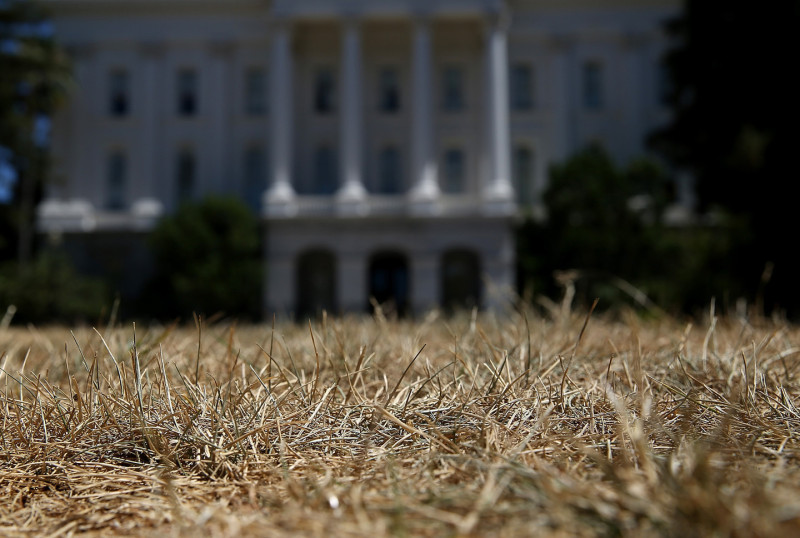San Francisco ranked near the lowest usage rates among California cities in December, at 40 gallons per person per day.
The closest that residents previously came to reaching the 20 percent reduction goal was in August, when water use dropped 11.6 percent.
Despite Conservation Wins, More Cuts Coming
The Sierra Nevada snowpack that supplies a third of California's water is 75 percent below its historical average. And for the first time in recorded history, there was no measurable rainfall in downtown San Francisco in January, when winter rains usually come.
Other ideas now being considered by the state water board include mandatory reviews of city water systems for leaks and penalizing agencies that haven't discouraged water-wasting by their customers.
A state drought-busting campaign declaring "Brown is the New Green" encourages people to let their lawns die. But outdoor watering makes up just a tenth of California's water use; three-quarters of it goes to agriculture, and yet state officials haven't campaigned in the same way against water-intensive almond orchards and rice fields.
"Homeowners should do their part, but the focus has been way too much on residents," said Maria Gutzeit, a member of a water district board in the Santa Clarita area. "You ask anyone here how they are going to sell a house with dead grass and dead bushes, and you'll bankrupt people for something that doesn't even significantly help the statewide water portfolio."
Other critics say the state should push even harder to reduce residential consumption, adopting the kinds of tougher measures already imposed in communities that save the most water, such as tiered pricing to make heavy users pay more, and even rationing of the water people use indoors.
The Associated Press contributed to this report.
